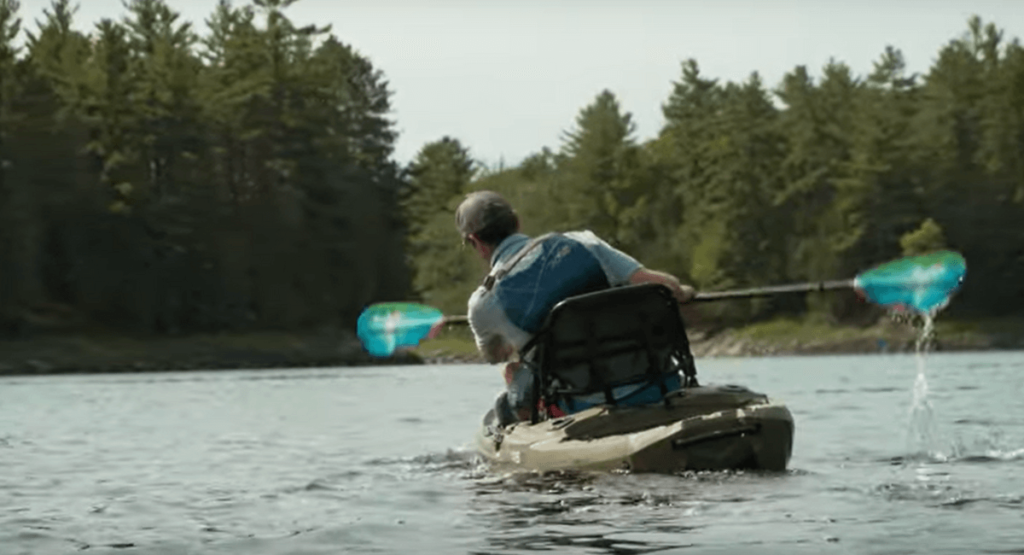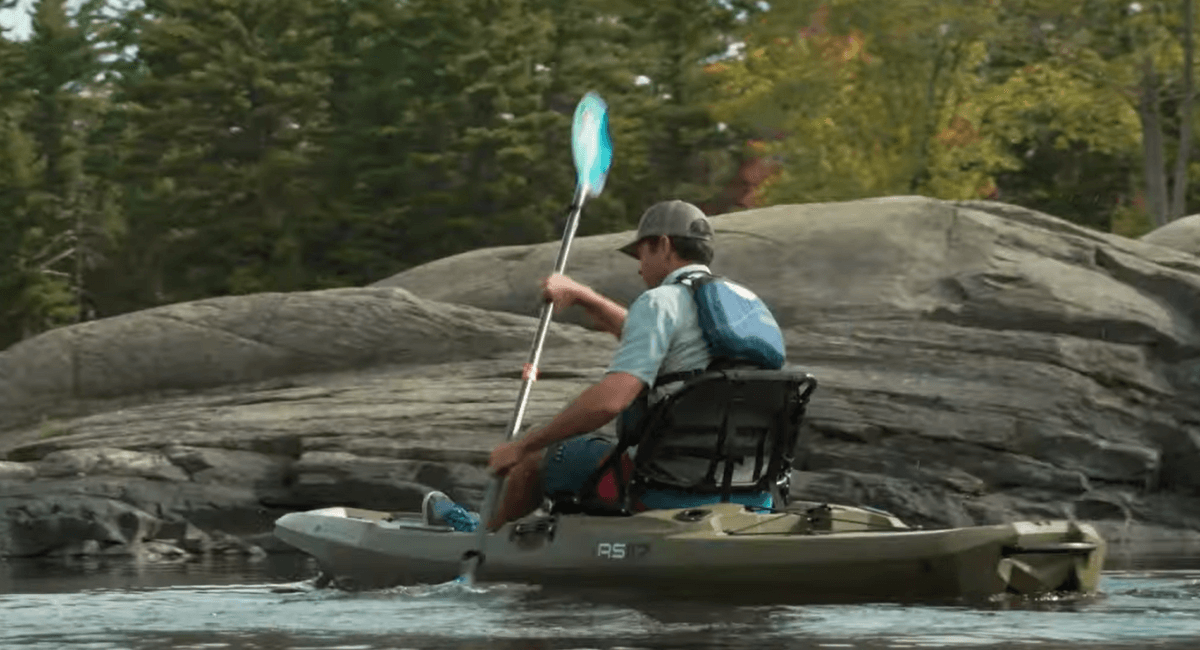The sit-on-top kayak is more stable than the sit-inside kayak due to its wider base. When choosing a kayak for stability, consider your skill level and intended use.
Sit-on-top kayaks provide more stability for beginners or recreational paddlers, while sit-inside kayaks offer increased speed and maneuverability for advanced users or rough waters. Understanding the unique features of each type will help you make an informed decision based on your needs and preferences.
With proper research and trial paddling, you can select the kayak that offers the stability you require for your kayaking adventures.
Types Of Kayaks
Kayaking offers a thrilling way to explore the great outdoors, but one key consideration for beginners is which type of kayak offers greater stability. Understanding the various types of kayaks available can help you choose the most stable option for your adventures.
Sit-on-top Kayaks
Sit-on-top kayaks are known for their stability due to their wide, flat hull design. They are ideal for beginners and recreational paddlers seeking a secure and easy-to-maneuver option. These kayaks are self-bailing, providing a safer experience for individuals who may be concerned about tipping over.
Sit-inside Kayaks
Sit-inside kayaks offer a lower center of gravity, contributing to improved stability in calmer waters. While they may feel happier than sit-on-top kayaks initially, they are more suitable for advanced paddlers looking for better control and efficiency in rougher conditions. These kayaks provide a snug fit and protection against the elements.
Factors Affecting Stability

When choosing a kayak, stability is a crucial factor to consider for a safe and enjoyable paddling experience.
Width Of The Kayak
Wider kayaks generally provide better stability due to their enhanced surface area on the water.
Design Features
- Flat Hulls: offer primary stability, suitable for beginners.
- Pontoon Hulls: secondary stability, ideal for rough waters.
- V-shaped Hulls: provide speed but less initial stability.
Consider the design features with the width of the kayak to determine the optimal stability for your needs.
Stability In Different Water Conditions

Understanding the stability of a kayak in different water conditions is crucial for choosing the right one for your needs. The level of stability required varies depending on the type of water you plan to navigate.
Flat Water
Kayaking in calm, flat water requires a kayak with good primary stability, allowing for easy maneuvering and comfortable paddling. Look for kayaks with a wider hull and chined design, providing excellent stability on still water surfaces.
Additionally, kayaks with a flatter bottoms tend to perform well in flat water conditions, ensuring a secure and stable experience for recreational kayakers and beginners.
Rough Water
When facing rough and unpredictable water conditions, opt for a kayak with superior secondary stability. This will help the kayak maintain balance and control when navigating through waves and turbulent waters.
Consider kayaks with a rocker design, enabling better control and stability in rough waters, allowing for responsive maneuvering, and reducing the risk of capsizing.
Furthermore, look for kayaks with a narrower, V-shaped hull to efficiently cut through waves, ensuring stability and confidence in challenging water conditions.
Paddler’s Experience Level

When it comes to choosing a kayak, stability is a crucial factor that paddlers consider. The stability of a kayak determines how balanced and secure it feels on the water. One important aspect of stability is the paddler’s experience level, as different kayaks are designed with different skill levels in mind. Whether you are a beginner or an experienced paddler, selecting the right kayak can enhance your overall kayaking experience.
Beginner Paddlers
For those who are new to kayaking, it is essential to choose a kayak that offers a high level of stability. Beginner paddlers may not have the same level of confidence and balance on the water as experienced paddlers, and hence, they require kayaks that are forgiving and easy to handle.
When selecting a kayak for beginner paddlers, factors such as hull design and width play a significant role in providing stability. It is recommended to opt for kayaks with a wider beam as they offer better initial stability, making it easier for beginners to feel stable and comfortable.
Additionally, sit-on-top kayaks are highly suitable for beginners as they provide a greater sense of stability due to their open design. These kayaks have a wider, more stable platform and are less prone to tipping over, which allows beginners to gain confidence in their paddling abilities.
Experienced Paddlers
Experienced paddlers, on the other hand, often seek a higher level of performance and maneuverability in their kayaks. While stability remains important, experienced paddlers can handle kayaks with a narrower beam and a more streamlined hull design.
Kayaks designed for experienced paddlers tend to have lower initial stability, as they prioritize speed and agility. These kayaks allow paddlers to make quick turns and glide through the water effortlessly.
Hard-shell kayaks such as sea kayaks or touring kayaks are popular among experienced paddlers due to their enhanced performance capabilities. With their sleek design and advanced features, these kayaks offer improved stability once the paddler has mastered the skills required to handle them.
It is worth noting that even experienced paddlers may prefer kayaks with higher initial stability in certain situations, such as when fishing or engaging in other activities that require a stable platform.
In conclusion, the stability of a kayak depends on the paddler’s experience level. Beginner paddlers should opt for kayaks with high initial stability to build confidence, while experienced paddlers can explore kayaks with lower initial stability to maximize their performance on the water.
Using Kayak Reviews And Ratings
Discover which kayak offers the best stability with the help of kayak reviews and ratings. Make an informed choice and enjoy a stable and secure paddling experience.
Using Kayak Reviews and Ratings When choosing a kayak, finding the right balance between stability and maneuverability is crucial. With the plethora of options available, it can be overwhelming to determine which kayak is more stable.
Fortunately, kayak reviews and ratings can provide valuable insights to help in making a well-informed decision. Reliability of Reviews When relying on kayak reviews and ratings, it’s important to ensure their reliability. Look for reviews from trusted sources and established kayak enthusiasts. Additionally, prioritize verified customer feedback to gain genuine insights into the stability of different kayak models.
By analyzing the consensus among multiple reviews, you can form a more accurate understanding of the kayaks’ stability. Key Features to Look For When gauging the stability of a kayak through reviews and ratings, certain key features can serve as indicators. Wide hulls and flat bottoms are often markers for stability, as they offer a solid foundation on the water. Additionally, secondary stability, referring to a kayak’s ability to resist tipping at higher angles, is a crucial aspect to consider. Look for reviews that specifically address these features to gauge a kayak’s stability effectively.
By leveraging reliable kayak reviews and focusing on key stability indicators, you can make an informed decision when selecting a stable kayak that aligns with your needs and preferences.
Testing Stability
Testing Stability: When choosing a kayak, stability is crucial for a safe and enjoyable paddling experience. To determine which kayak offers better stability, various tests and demos can be conducted. These assessments provide valuable insights into how well each kayak performs on the water.
On-water Tests:
- Paddling in calm and choppy waters to observe stability.
- Performing maneuvers like turns and sudden stops to test balance.
- Simulating different weight distributions to assess stability under various conditions.
In-store Demos:
- Sitting in the kayak on a stable surface to gauge initial stability.
- Rocking the kayak gently to evaluate secondary stability.
- Checking the width and design of the kayak hull for stability indicators.
Overall, conducting thorough stability tests through on-water trials and in-store demos is essential in determining which kayak offers superior stability for your paddling needs.
Enhancing Kayak Stability
Increase your stability on water by enhancing your kayak. From adding stability accessories to improving paddling techniques, there are various ways to make your kayak more stable in challenging conditions.
Adding Stability Accessories
- Consider using a kayak stabilizer system for extra support.
- Attach outriggers or pontoons to your kayak for increased stability.
- Install a rudder system to improve tracking and stability while paddling.
Improving Paddling Technique
- Focus on maintaining proper posture and balance in your kayak.
- Practice a smooth and controlled paddling motion to avoid tipping over.
- Learn how to brace effectively to prevent capsizing in rough waters.
Frequently Asked Questions For Which Kayak Is More Stable
What Makes A Kayak Stable In The Water?
A kayak’s stability in the water is mainly determined by its width and hull design. Wider kayaks offer more stability, while kayaks with a flat hull are generally more stable than those with a rounded hull.
Are Sit-on-top Kayaks More Stable Than Sit-inside Kayaks?
Yes, sit-on-top kayaks are typically more stable than sit-inside kayaks. Their wider design and open cockpit provide better stability, making them ideal for beginners or those who prioritize stability over speed and performance.
How Does Weight Capacity Affect Kayak Stability?
The weight capacity of a kayak directly influences its stability. Exceeding the weight limit can cause the kayak to sit lower in the water, reducing stability. It’s crucial to choose a kayak with a weight capacity that comfortably accommodates your weight and the gear you intend to carry.
Conclusion
In considering stability, it’s crucial to assess various factors such as design, width, and material. Ultimately, the most stable kayak for you depends on your individual preferences, paddling style, and the type of water you’ll be navigating. Prioritize your safety and comfort when choosing a kayak to ensure enjoyable and secure paddling experiences.
